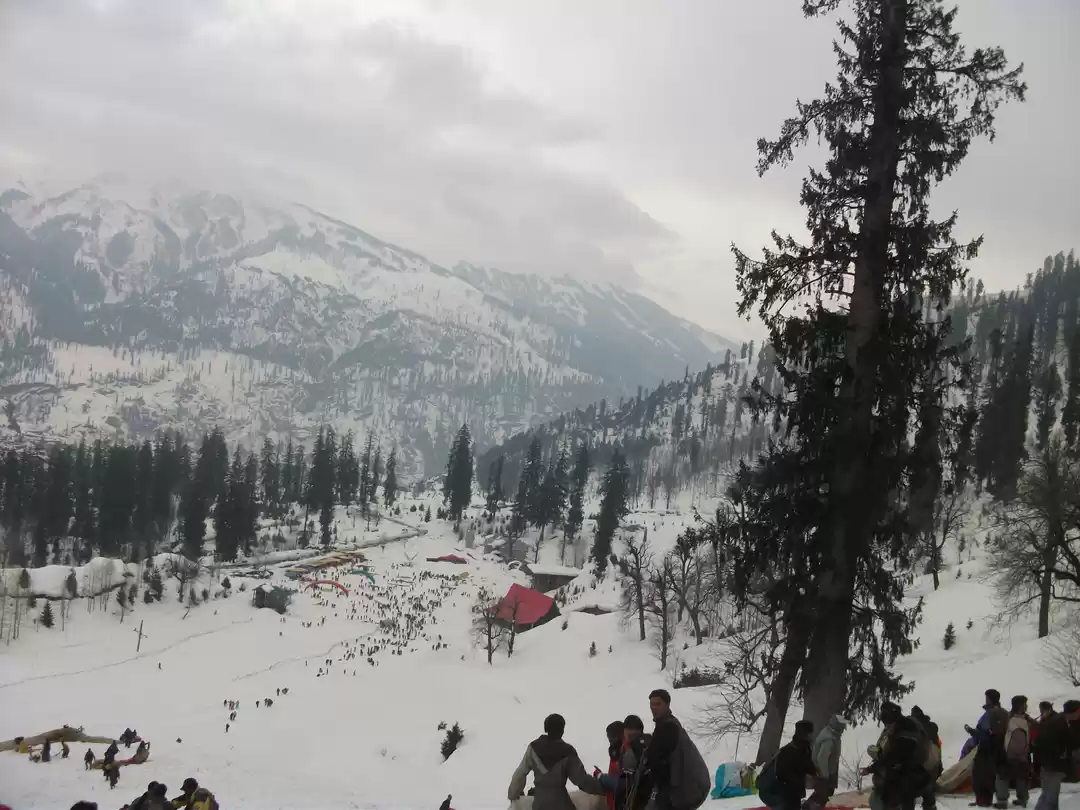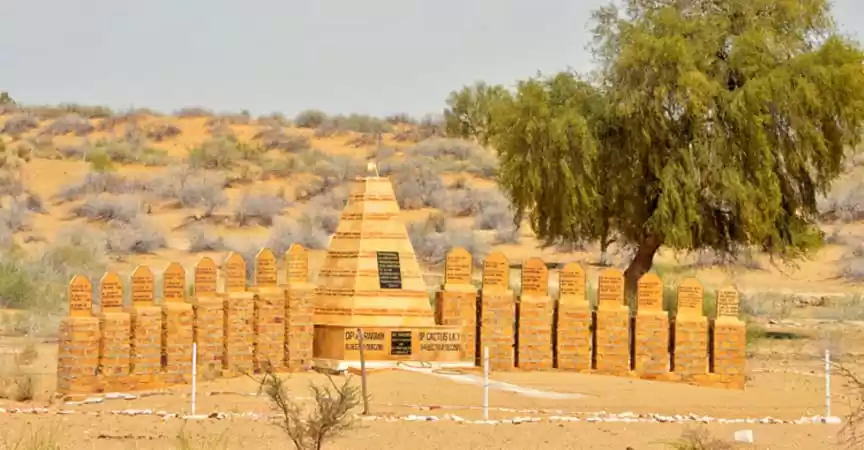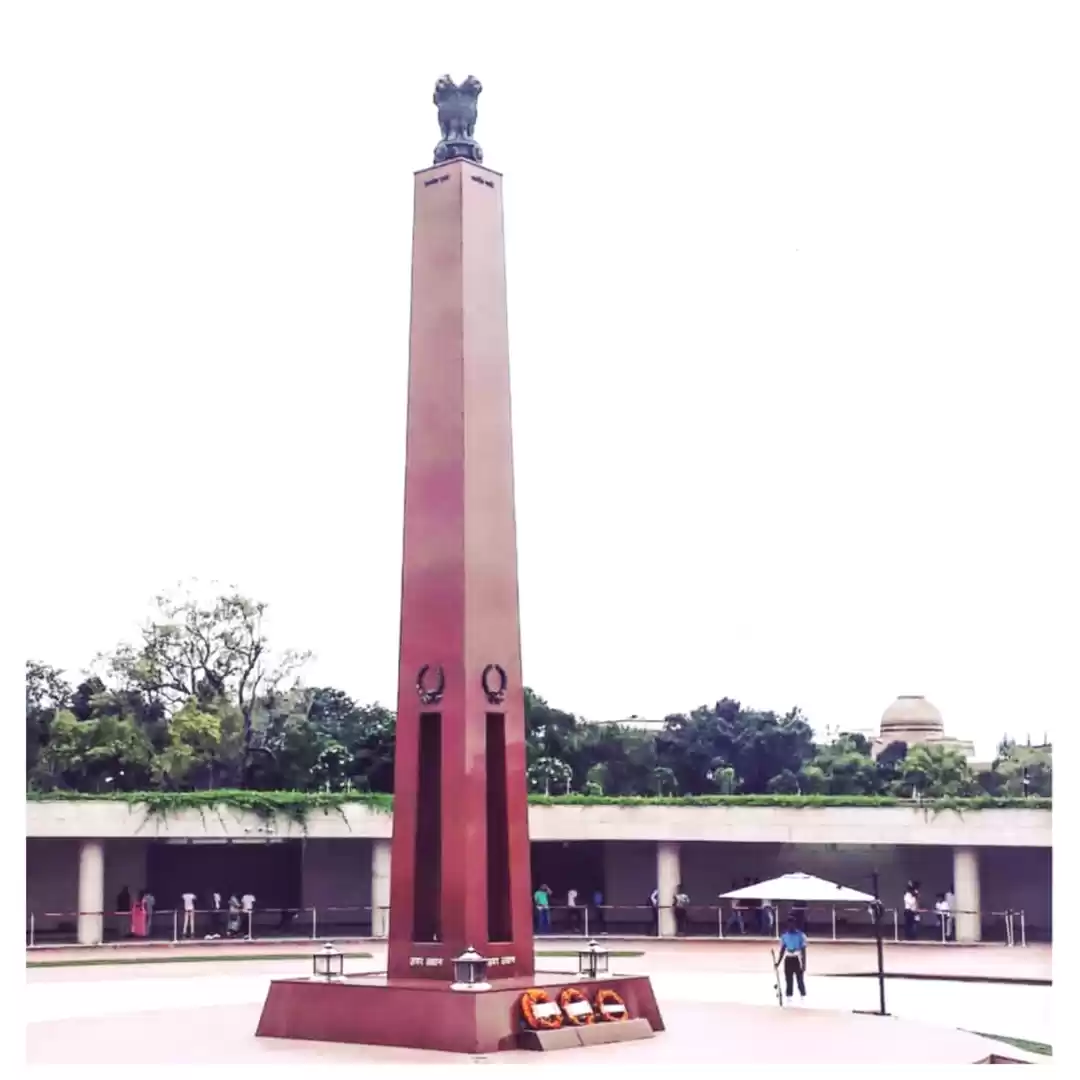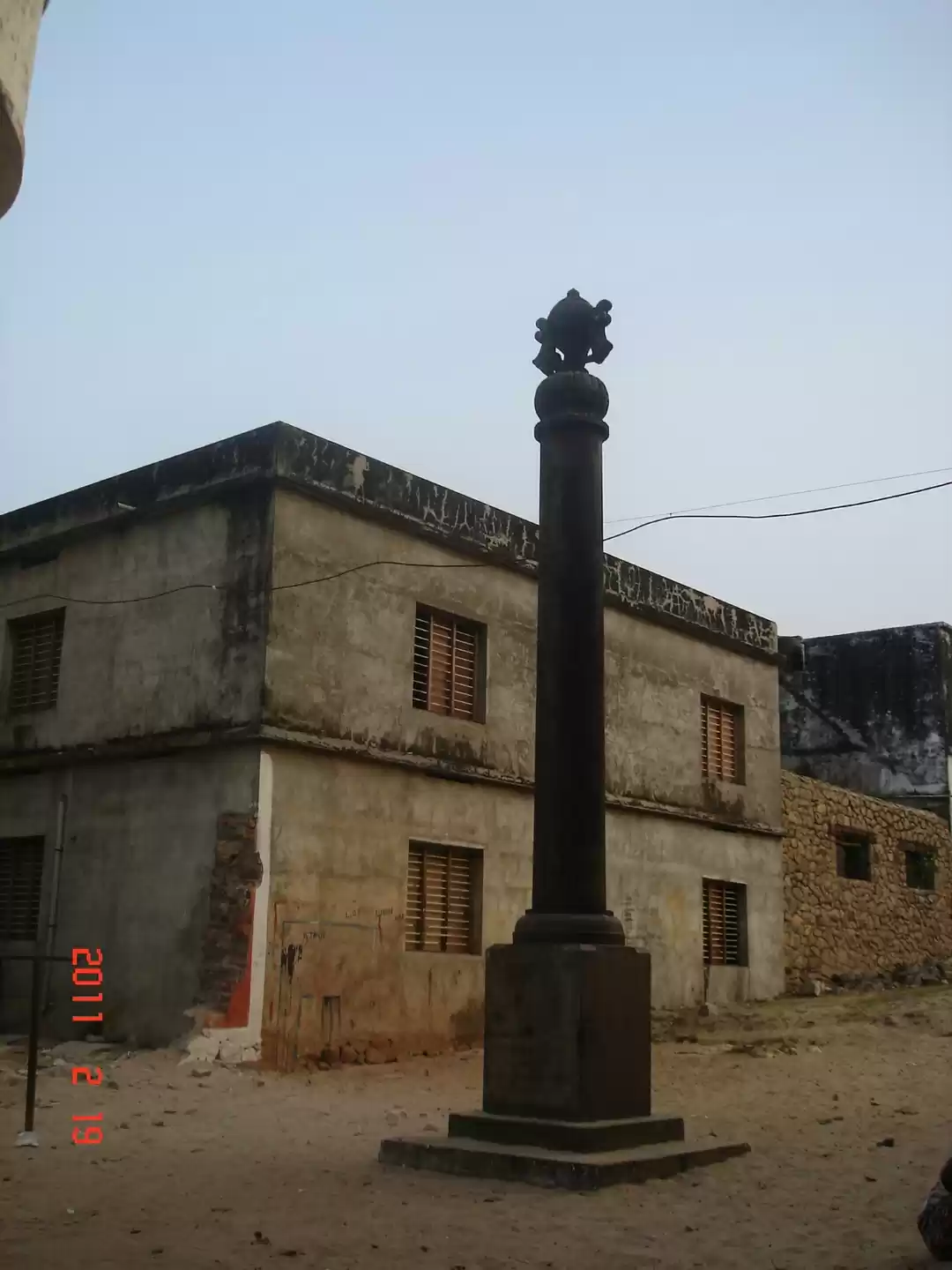Imagine standing in front of a wall that bears the names of 527 soldiers who laid down their lives for the nation. Imagine walking on a path that leads to a flame that burns eternally in their memory. Imagine seeing a gallery that showcases their stories of valor and heroism. This is what awaits you at the Kargil War Memorial, a place that honors and commemorates the martyrs of the 1999 Kargil War.
The Kargil War Memorial is located in Dras, a town in the Ladakh region of India, near the Line of Control (LOC) that separates India and Pakistan. It was built by the Indian Army after the war, which was one of the most intense and challenging conflicts in the history of India. The war lasted for more than two months, from May to July 1999, and resulted in the victory of India over the Pakistani intruders who had occupied the strategic heights of Kargil.
The Kargil War Memorial is not just a monument, but a living testimony of the bravery and patriotism of the Indian armed forces. It is a place where you can pay your respects, learn about the history, and feel inspired by the spirit of the soldiers. It is also a place where you can witness the beauty and diversity of Kargil, a land of mountains, valleys, and rivers.
In this article, we will tell you everything you need to know about the Kargil War Memorial, such as how to reach, when to visit, and what to see. We will also give you some tips and guidelines for visiting the memorial, and suggest some nearby attractions and places to visit in Kargil. Whether you are a history buff, a nature lover, or a patriotic citizen, you will find something to interest and amaze you at the Kargil War Memorial.

History
Before we dive into the details of the Kargil War Memorial, let us first understand the background and context of the Kargil War, the causes, the timeline, the major battles, and the outcome.
The Kargil War was a result of the long-standing dispute between India and Pakistan over the Kashmir region, which dates back to the partition of India in 1947. The two countries have fought three wars over Kashmir, in 1947, 1965, and 1971, and have been involved in several skirmishes and ceasefire violations along the LOC.
The Kargil War was triggered by the infiltration of Pakistani troops and militants into the Indian side of the LOC, in the Kargil district of Ladakh. The intruders occupied the strategic heights of Kargil, such as Tiger Hill, Tololing, and Point 4875, and posed a threat to the national security and sovereignty of India. They also aimed to cut off the supply and communication lines between Srinagar and Leh, the two main cities of Ladakh.
The Indian Army and the Air Force launched a massive operation, codenamed Operation Vijay, to evict the intruders and regain control of the territory. The operation involved more than 30,000 troops, supported by artillery, tanks, helicopters, and fighter jets. The operation faced many challenges, such as the rugged terrain, the harsh weather, the high altitude, and the enemy fire.
The operation lasted for more than two months, from May 26 to July 26, 1999, and witnessed some of the most fierce and heroic battles in the history of India. The Indian forces fought with courage and determination, and recaptured the key positions of Kargil, one by one. The war ended with the withdrawal of the Pakistani forces, under international pressure and diplomatic intervention.
The war claimed the lives of 527 Indian soldiers and wounded more than 1,300. The Pakistani casualties were estimated to be around 700 killed and 1,200 wounded. The war also resulted in the loss of civilian lives and property, and the displacement of thousands of people in Kargil.
The war was a decisive victory for India, and a demonstration of its military prowess and political will. The war also boosted the morale and pride of the nation, and strengthened the bond between the people and the armed forces. The war also highlighted the need for peace and dialogue between the two countries, and the resolution of the Kashmir issue.
The Kargil War Memorial was built by the Indian Army in 2000, to honor and commemorate the martyrs of the war, and to educate and inspire the visitors about the history and significance of the war. The memorial is also a place where the nation pays homage and gratitude to the fallen heroes, every year, on July 26, which is celebrated as Kargil Vijay Diwas.
Features
The Kargil War Memorial is a magnificent and majestic structure, that stands tall and proud in the backdrop of the Himalayan peaks. The memorial has several features and design elements, that honor and commemorate the fallen soldiers, and inspire and educate the visitors. Here are some of the main features of the memorial:
Entrance Gate: The entrance gate of the memorial is a large and imposing arch, that welcomes the visitors with the words "Kargil War Memorial" and "Jai Hind" (Victory to India) inscribed on it. The gate also has the emblem of the Indian Army and the motto "Service Before Self" on it. The gate is flanked by two pillars, that display the names of the units and formations that participated in the war.
Vijaypath: The Vijaypath, or the Path of Victory, is a long and wide walkway, that leads from the entrance gate to the main memorial. The path is lined with flags of the Indian Army and the Air Force, and has several plaques and boards that provide information and facts about the war, such as the timeline, the battles, the weapons, and the awards. The path also has some of the captured equipment and vehicles of the enemy, such as guns, rockets, and tanks, that showcase the strength and skill of the Indian forces.
Amar Jawan Jyoti: The Amar Jawan Jyoti, or the Flame of the Immortal Soldier, is a sacred and solemn feature of the memorial, that symbolizes the eternal spirit and sacrifice of the soldiers. It is a large and circular structure, that has a cenotaph in the center, with a rifle and a helmet on it. The cenotaph is surrounded by four pillars, that have the words "Mera Bharat Mahan" (My India is Great) on them. The cenotaph also has a flame that burns continuously, day and night, in the memory of the martyrs. The visitors can pay their respects and offer their salutations to the cenotaph, and observe a moment of silence.
Memorial Wall: The memorial wall is the most touching and emotional feature of the memorial, that bears the names of 527 soldiers who laid down their lives for the nation. The wall is a long and curved structure, that has granite panels with the names, ranks, and units of the martyrs engraved on them. The wall also has the words "Shaheedon Ki Chitaon Par Lagenge Har Baras Mele, Watan Par Marne Walon Ka Yahi Baaki Nishaan Hoga" (There will be fairs on the pyres of the martyrs every year, this will be the only remaining mark of those who died for the nation) on it. The wall is a place where the visitors can feel the pain and pride of the families and friends of the martyrs, and express their gratitude and admiration for them.
Manoj Pandey Gallery: The Manoj Pandey Gallery is a feature of the memorial, that showcases the stories and achievements of the heroes of the war, who displayed extraordinary courage and valor, and won the highest gallantry awards of the nation. The gallery is named after Lieutenant Manoj Kumar Pandey, who was posthumously awarded the Param Vir Chakra, the highest military decoration of India, for his bravery and leadership in the battle of Khalubar. The gallery has several displays and exhibits, such as photos, videos, letters, medals, and uniforms, that depict the life and deeds of the gallantry award winners, such as Captain Vikram Batra, Rifleman Sanjay Kumar, and Major Padmapani Acharya. The gallery is a place where the visitors can learn about the heroism and patriotism of the soldiers, and feel inspired and motivated by them.
Significance
The Kargil War Memorial is not just a monument, but a living testimony of the bravery and patriotism of the Indian armed forces. It is a place where you can pay your respects, learn about the history, and feel inspired by the spirit of the soldiers. It is also a place where you can witness the beauty and diversity of Kargil, a land of mountains, valleys, and rivers.
The Kargil War Memorial is a place of great significance and impact, for the nation, the armed forces, and the visitors. Here are some of the reasons why the memorial is important and meaningful:
- The memorial serves as a reminder of the valor and sacrifice of the Indian armed forces, who fought with courage and determination, and defended the sovereignty and integrity of the nation. The memorial also honors and commemorates the martyrs of the war, who laid down their lives for the nation, and pays tribute to their families and friends.
- The memorial fosters a sense of national pride and unity among the citizens, who celebrate the victory and honor the martyrs of the war every year, on July 26, which is marked as Kargil Vijay Diwas. The memorial also educates and inspires the younger generations, who learn about the history and significance of the war, and the values and ideals of the armed forces.
- The memorial showcases the beauty and diversity of Kargil, a land of mountains, valleys, and rivers, that offers a stunning and scenic view of the Himalayan landscape. The memorial also promotes the tourism and development of Kargil, which was affected by the war, and provides livelihood and opportunities to the local people. The memorial also highlights the culture and heritage of Kargil, which is rich and diverse, and reflects the influence of Buddhism, Islam, and Hinduism.
Tips
If you are planning to visit the Kargil War Memorial, you will need some useful tips and guidelines to make your trip smooth and enjoyable. Here are some of the things you should know before you go:
- The best time to visit the Kargil War Memorial is between May and September, when the weather is pleasant and the roads are clear. The winter months, from November to March, are very cold and snowy, and the roads may be blocked or closed due to landslides or avalanches. The summer months, from June to August, are also the peak tourist season, and you may find the memorial crowded and busy.
- The entry fee to the Kargil War Memorial is Rs. 10 per person, and the timings are from 9 am to 5 pm, every day. You will need to show your identity proof and register at the entrance gate. You will also need to follow the security and safety rules, such as not carrying any weapons, explosives, or inflammable items, and not touching or damaging any of the displays or exhibits.
- The dress code for visiting the Kargil War Memorial is modest and respectful, as it is a place of reverence and homage. You should avoid wearing any offensive or provocative clothing, such as shorts, skirts, or sleeveless tops, and cover your head, shoulders, and knees. You should also avoid wearing any military or camouflage clothing, as it may cause confusion or suspicion.
- The photography at the Kargil War Memorial is allowed, but you should be careful and courteous while taking pictures. You should not take any photos or videos of the security personnel, the military equipment, or the sensitive areas, such as the LOC. You should also not take any selfies or group photos with the memorial wall, the cenotaph, or the flame, as it may be considered disrespectful or insensitive. You should also not use any flash or tripod, as it may disturb or distract the visitors or the staff.
- The Kargil War Memorial is a place of solemnity and dignity, and you should behave accordingly. You should not make any noise, play any music, or talk loudly, as it may disturb the peace and tranquility of the memorial. You should also not litter, spit, or smoke, as it may spoil the cleanliness and hygiene of the memorial. You should also not write, carve, or graffiti on any of the walls, plaques, or boards, as it may damage or deface the memorial. You should also respect the sentiments and emotions of the visitors and the staff, and not make any jokes, comments, or gestures that may be offensive or hurtful.

Nearby Attractions
The Kargil War Memorial is not the only attraction in Kargil, which is a land of natural beauty and cultural diversity. There are many other places to visit and explore in Kargil, that will make your trip more enjoyable and memorable. Here are some of the nearby attractions and places to visit in Kargil:
Dras Valley: The Dras Valley is a picturesque and serene valley, that lies on the way to the Kargil War Memorial, about 10 km from Dras town. The valley is known as the second coldest inhabited place in the world, after Siberia, and has a record low temperature of -60°C. The valley is also known as the gateway to Ladakh, and offers a stunning view of the snow-capped mountains, the green meadows, and the clear streams. The valley is a paradise for nature lovers, trekkers, and photographers, who can enjoy the scenic beauty and the wildlife of the valley. The valley is also home to the Dras War Memorial, another memorial dedicated to the martyrs of the Kargil War, which is worth a visit.
Suru Valley: The Suru Valley is a beautiful and fertile valley, that lies between Kargil and Zanskar, about 60 km from Kargil town. The valley is named after the Suru River, which flows through it, and is a tributary of the Indus River. The valley is known for its lush green fields, orchards, and villages, that contrast with the barren and rugged mountains. The valley is also known for its rich and diverse culture, that reflects the influence of Buddhism and Islam. The valley is a haven for adventure seekers, who can indulge in activities such as rafting, camping, and skiing. The valley is also famous for its festivals and fairs, such as the Sani Festival, the Losar Festival, and the Suru Festival, that showcase the art, music, and dance of the valley.
Zanskar Valley: The Zanskar Valley is a remote and isolated valley, that lies in the south-east of Ladakh, about 105 km from Kargil town. The valley is one of the most unexplored and untouched regions of India, and is known for its rugged and spectacular landscape, that consists of mountains, glaciers, rivers, and gorges. The valley is also known for its ancient and unique culture, that follows the Tibetan Buddhism. The valley is a dream destination for adventure enthusiasts, who can experience the thrill of trekking, mountaineering, and river rafting. The valley is also famous for its monasteries and temples, such as the Phugtal Monastery, the Zongkhul Monastery, and the Stongdey Monastery, that are perched on the cliffs and caves of the valley.
Conclusion
The Kargil War Memorial is a place that every Indian should visit at least once in their lifetime, to pay their respects and gratitude to the bravehearts of India, who fought and died for the nation in the 1999 Kargil War. The memorial is a place that tells the story of the war, the history, the battles, the heroes, and the martyrs, in a way that is informative and inspiring. The memorial is also a place that showcases the beauty and diversity of Kargil, a land of mountains, valleys, and rivers, that offers a stunning and scenic view of the Himalayan landscape.
If you are looking for a trip that is not only enjoyable, but also meaningful and memorable, you should plan to visit the Kargil War Memorial, and experience the emotions and impressions that it evokes. You will not only learn about the war, but also about the values and ideals of the Indian armed forces, such as courage, sacrifice, patriotism, and service. You will also discover the culture and heritage of Kargil, which is rich and diverse, and reflects the influence of Buddhism, Islam, and Hinduism.

















































